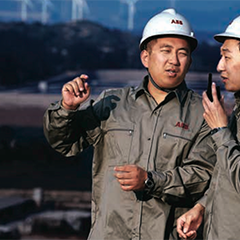Alfredo Parres, head of ABB’s wind industry sector initiative, reports on China’s fast-evolving wind industry and how it is adopting new technologies to reduce losses and increase penetration of wind energy on the grid.
As part of its drive to reduce carbon emissions and protect its environment and future economy, the Chinese government is pushing hard to develop the country’s wind energy sector. As a result, Chinese wind energy has entered a new phase, which is seeing the emphasis change from building generating capacity to improving its performance and integrating wind energy.
In 2013 China had the largest installed wind power capacity in the world but lack of grid connection and high rates of curtailment meant that the country actually produced 20 percent less electricity from wind than the USA. The same year, China’s National Energy Administration created a number of policies to solve the issue of curtailment and introduced a wind power development plan.
According to the Global Wind Energy Council, there are now wind power plants in every Chinese province and capacity is set to grow from 114 GW in 2014 to 414 GW by 2030.
In setting these high targets, China has the challenge of ensuring that its transmission and distribution grid has the resilience and the flexibility to accommodate a high penetration of wind energy. The country’s operators also have the challenge of generating high quality power more efficiently than ever as Feed In Tariffs (FITs) come under pressure.
Wind energy is characterised by a high degree of intermittency, which is related to the effect of gusts and eddies causing peaks and troughs in the output of wind farms. This leads to poor quality power and ultimately to instability and outages. In response, grid operators have the right to set a limit on the amount of wind energy they will accept, leading to curtailment when excess power is generated.
Another challenge that China must overcome is in reducing the transmission losses experienced because wind farms tend to be located far from the cities and centres of industry where power will be consumed.















